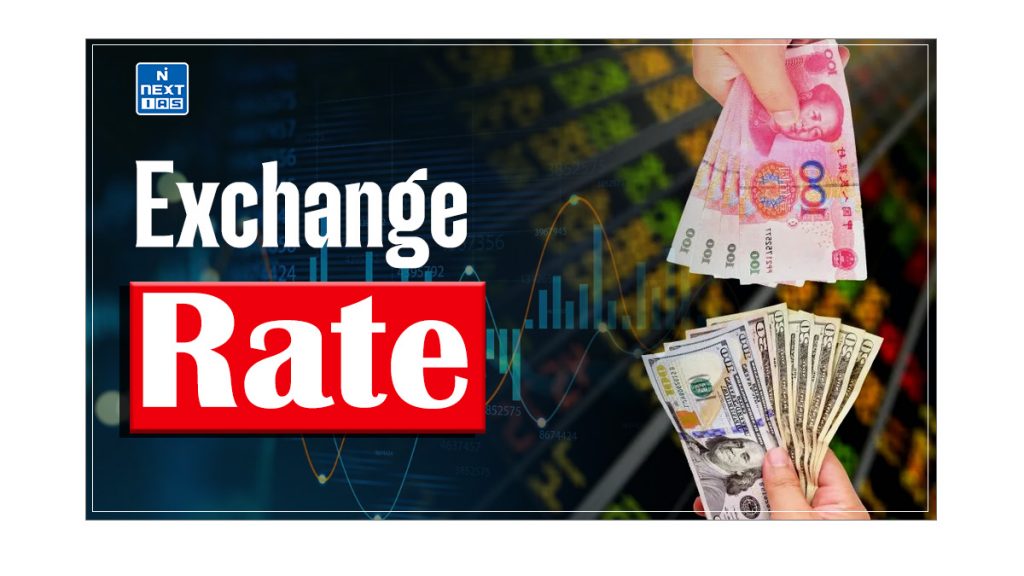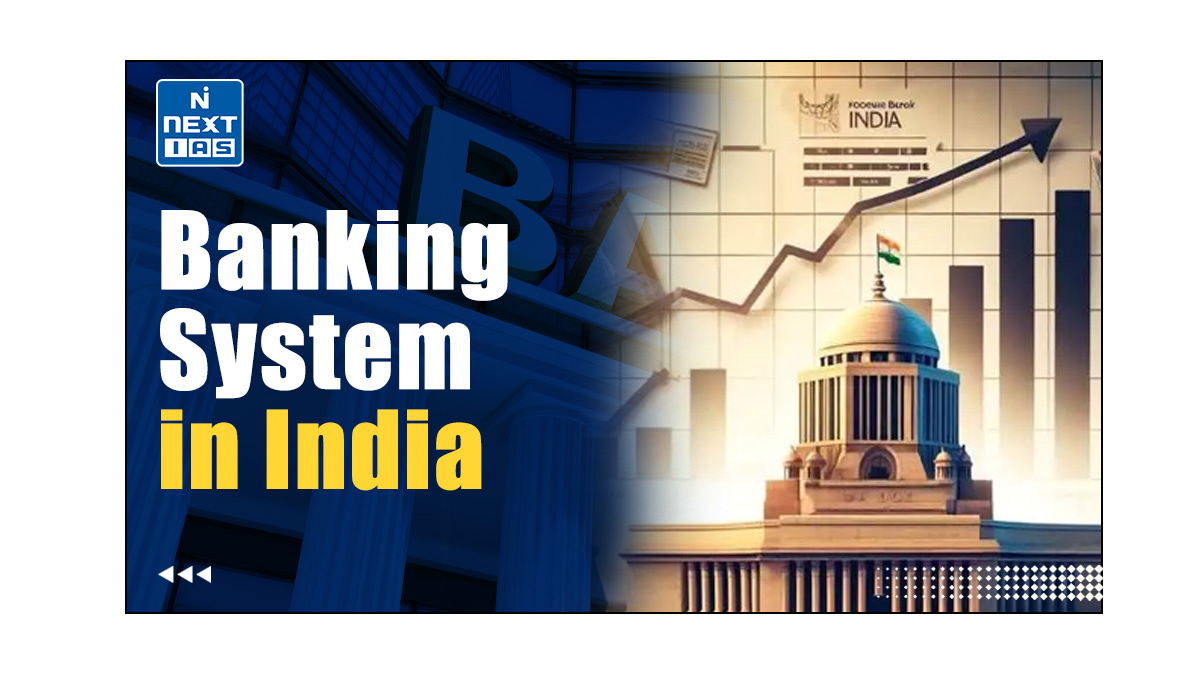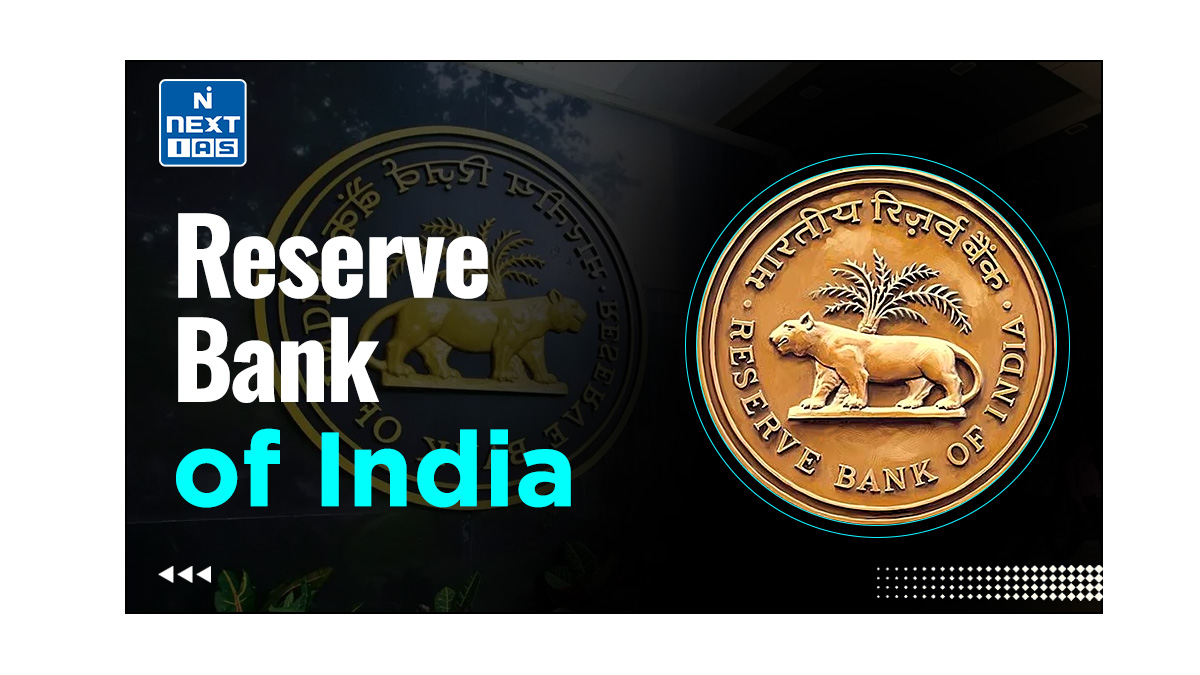
Exchange Rate is a pivotal element of the global economic system, affecting trade, investment, and economic policy. Understanding the various exchange rate systems, the mechanisms behind currency valuation, and the factors influencing exchange rates is crucial to navigating the complexities of international finance. This article aims to study in detail the concept of Exchange Rate, its meaning, types, and other related concepts such as Nominal Effective Exchange Rate (NEER), Real Effective Exchange Rate (REER), Devaluation & Revaluation, etc.
What is Exchange Rate?
- Exchange Rate, or the rate of exchange, is the price of the currency of a nation in terms of another currency i.e. the price at which one currency can be traded for another.
- The rate of exchange of a currency w.r.t. another currency reflects the relative demand of the two currencies.
- For example, if the US Dollar is stronger than the Indian Rupee, it implies that value of the US Dollar is higher w.r.t. the Indian Rupee).
- This, in turn, shows that the demand for US Dollars (by those holding Indian Rupees) is more than the demand for Indian Rupees (by those holding US Dollars).
- The relative demands of the two currencies depend on the relative demand for the goods & services of the two countries.
Types of Exchange Rate System
The major types of exchange rate system are as follows:
- Fixed Exchange Rate System or Pegged Exchange Rate System.
- Flexible Exchange Rate System or Floating Exchange Rate System.
- Managed Floating Rate System.
Fixed Exchange Rate System
- It is the one wherein the rate of exchange for a currency is fixed by the government.
- Under this system, a country fixes the value of its currency in terms of some ‘External Standard’, which can be precious metals such as gold or silver, or currency of some other country or some internationally agreed unit of account.
- The main purpose of adopting this system is to ensure stability in capital movements and foreign trade.
- To maintain stability, the government buys foreign currency when the exchange rate weakens and sells foreign currency when it strengthens.
- In order to be able to do this, the government maintains large reserves of foreign currencies.
Pegging
When the value of the domestic currency is tied to the value of another currency or in terms of gold, it is known as ‘Pegging.’
Flexible Exchange Rate System
- It is also known as a ‘Floating Exchange Rate’.
- In this system, the rate of exchange is determined by forces of demand and supply of the currencies in the foreign exchange market i.e. by the market through interactions of firms, banks, and other institutions involved in buying and selling of currencies.
- The value of the currency is allowed to fluctuate freely according to changes in the demand and supply of foreign exchange.
- In this system, there is no intervention of the government in the foreign exchange market.
Fixed Exchange Rate System Vs Flexible Exchange Rate System
| Basis of Differences | Fixed Exchange Rate | Flexible Exchange Rate |
|---|---|---|
| Determination of Exchange Rate | It is officially fixed in terms of gold or any other currency by the government. | It is determined by forces of demand and supply. |
| Government Control | There is complete government control as only the government has the power to change it. | There is no government intervention and it fluctuates freely according to market conditions. |
| Stability | The rate of exchange generally remains stable, and only a small variation is possible. | The rate of exchange keeps on changing. |
| Impact on Currency | Currency is devalued and if any changes take place in the currency, it is revalued. | Currency appreciates and depreciates in this system. |
| Involvement of Government Bank | Government bank determines the rate of exchange. | No such involvement of government banks. |
| Need for Maintaining Foreign Reserve | Foreign reserves need to be maintained. | No need to maintain foreign reserves. |
| Impact on BOP (Balance of Payment) | This can cause a deficit in BOP that cannot be adjusted. | A deficit or surplus in BOP is automatically corrected. |
Managed Floating Rate System
- It is a system having characteristics which is hybrid of both fixed as well as flexible exchange rate systems.
- In this system, rate of exchange is determined by market forces, but, time to time, the Central Bank intervenes in the foreign exchange market to keep the fluctuations within certain limits.
- It is also known as ‘Dirty Floating’.
Devaluation and Revaluation
What is Devaluation?
Devaluation refers to a reduction in the value of domestic currency by the government.
What is Revaluation?
- Revaluation refers to an increase in the value of domestic currency by the government.
- Revaluation refers to a situation when the value of a currency w.r.t a foreign currency increases in a fixed exchange rate.
Note: Altering the face value of a currency, without changing its foreign exchange rate, is called redenomination.
Differences between Devaluation and Depreciation
| Dimensions | Devaluation | Depreciation |
|---|---|---|
| Meaning | Devaluation refers to a reduction in the price of domestic currency in terms of all foreign currencies. | Depreciation refers to a fall in the market price of a country’s currency in terms of a foreign currency. |
| Occurrence | It takes place due to the Government. | It takes place due to market forces of demand and supply. |
| System | It takes place in a fixed exchange rate system. | It takes place in a flexible exchange rate system. |
Currency Manipulation
- This is a “unfair currency practices” wherein a country devalues its domestic currency’s value against the dollar deliberately.
- The practice would mean that the country in question is lowering the value of its currency artificially in order to gain unfair advantages over others.
- Devaluation reduces the cost of exports from that country and hence trade deficits.
Currency Manipulators
- The US Department of Treasury publishes a semi-annual report which monitors developments in the international economies and foreign exchange rates therein.
- It reviews the currency practices of the US’ 20 biggest trading partners.
- An economy meeting two of the following three criteria (as mentioned in the Trade Facilitation and Trade Enforcement Act of 2015) is kept on the Watch List:
- A bilateral trade surplus of at least USD 20 billion with the USA over a a period of 12 months.
- A material current account surplus of worth at least 2% of Gross Domestic Product (GDP) over a period of 12 months.
- Purchases of foreign currency worth at least 2% of the country’s GDP in at least six out of 12 months period.
- Countries that meet all three of the criteria are labelled as currency manipulators by the Treasury.
Types of Exchange Rate Markets
Spot Market
- It refers to a market wherein the purchase and sale of foreign currency are settled within 2 days of the deal.
- The rate at which the foreign currency is bought and sold is called the spot exchange rate.
Forward Market
- It refers to that market, which deals in the sale and purchase of foreign currency at some future date at a pre-settled rate of exchange, called forward exchange rate.
- When sellers and buyers enter an agreement to sell and buy a foreign currency after 90 days of the deal, it is called a forward transaction.
Factors Affecting Exchange Rates
- Intervention of the Reserve Bank of India: During high volatility in the rate of exchange, the RBI intervenes to keep that in control. e.g. it sells US Dollars when the Indian Rupee depreciates too much, or purchases US Dollars when the Indian Rupee appreciates beyond a certain level.
- Inflation Rate: The increase in inflation rate can lead to an increase in the demand for foreign currency, thus negatively impacting the rate of exchange of the domestic currency. For example, an increased price of petroleum oil can increase the demand for foreign currency, thus leading to the depreciation of Indian Rupee.
- Interest Rate: Interest rates on corporate securities, or government securities and bonds, impact the inflow and outflow of foreign currency. When interest rates on government bonds are higher compared to those in other countries, it can attract foreign currency inflows, while lower interest rates may lead to outflows. This, in turn, impacts the rate of exchange of the Indian rupee.
- Exports and Imports: Exports earn foreign currency whereas imports require payments in foreign currency. Therefore, if exports rise, the national currency tends to appreciate, whereas an increase in imports usually results in the depreciation of the national currency.
- Other Factors: Indian foreign exchange market is also affected by other factors such as inflow in the capital account such as FDI, receipts in the accounts of exports in invisible in the current account,, external commercial borrowings, foreign institutional investments, NRI deposits, tourism activities etc.
Nominal Effective Exchange Rate (NEER)
- The Nominal Effective Exchange Rate (NEER) refers to the weighted average of bilateral nominal exchange rate of the domestic currency in terms of foreign currencies.
- In other words, It is the rate of exchange of one currency relative to a basket of currencies, with weights based on trade volume with each country (not adjusted for inflation).
NEER = Domestic currency exchange rate in terms of SDR / Foreign currency exchange rate in terms of SDR.
Real Effective Exchange Rate (REER)
- The Real Effective Exchange Rate (REER) is the weighted average of a country’s domestic currency against a basket of major currencies, adjusted for inflation.
- The weights are determined according to the relative trade balance of a country’s currency with each country included in the index.
REER = NEER × (Domestic Price Index / Foreign Price Index)
Forex Reserve of India
- Foreign Exchange of a country reserves refers to the foreign currencies held by a country’s central bank.
- It is also called foreign reserves or foreign currency reserves.
- One of the most important reasons for holding reserves is to manage the currency’s value.
- Foreign Exchange reserves consist of the following:
- Foreign Currency Assets
- Gold
- Special Drawing Rights (SDR) holdings of the government
- Reserve Tranche
Foreign Currency Assets (FCAs)
- The currencies of various countries held in foreign exchange reserves are called foreign currency assets. For example, reserves held in US Dollars, Euro, Japanese Yen, etc.
- Apart from currencies, it includes foreign bank deposits, foreign treasury bills and short-term and long-term foreign government securities.
- The deposit agreements with IMF trust is also a part of FCAs and are readily available to meet a BOP financing need.
Gold
The RBI uses its gold stock as a back up to issue currency and meet the unexpected Balance of Payment problems.
Special Drawing Rights (SDRs)
- The Special Drawing Right (SDR) is an international reserve asset, created by the IMF, to supplement official reserves of its member countries, and help them meet Balance of Payment problem.
- It was created by the IMF in 1969.
- The member countries contribute to this account to avail of this benefit.
- The contribution is in proportion of their IMF quota (membership fee).
- Special Drawing Rights can be exchanged for freely usable currencies.
- The value of the SDR is based on a basket of five major currencies – the US dollar, the Euro, the Japanese yen, the British Pound Sterling, and the Chinese renminbi (RMB).
- The SDR is neither a claim on the IMF nor a currency. It is, rather, a potential claim on the freely usable currencies of IMF members.
- Holders of SDRs can obtain freely usable currencies in exchange for their SDRs in two ways:
- Through the arrangement of voluntary exchanges between members.
- IMF designates members with strong external positions to purchase SDRs from those with weaker external positions.
Reserve Tranche
- It is the portion of the required quota of currency that each IMF member country must contribute to the IMF, but can designate for its own use.
- The reserve tranche portion of the quota can be accessed by the member at any time, whereas the rest of the member’s quota is typically inaccessible.
- If any money was lent over and above the quota to the IMF’s General Resource Account, it becomes part of the Reserve Tranche.
Purchasing Power Parity (PPP)
- Purchasing Power Parity (PPP), as an economic concept, compares currencies of different countries through a market “basket of goods” approach.
- According to this concept, two currencies are in equilibrium or at parity when a market basket of goods, adjusted for the rate of exchange, costs the same in both countries.
- Using PPPs is the alternative to using market exchange rates.
- The actual purchasing power of a currency is the amount of that currency required to purchase a specific unit of a good or a basket of common goods and services.
- PPP (Purchasing Power Parity) is determined in each country based on its relative cost of living and inflation rates.
- Purchasing power parity ultimately means equalising the purchasing power of two currencies by accounting for differences in the cost of living and inflation rates.
- For example, a smartphone that costs around ₹3,000 in India would cost around $40 in the USA if the rate of exchange is considered as ₹75 for $1.
- The purchasing power parity is one of the most important macroeconomic metrics that are used by economists in determining the economic productivity and living standards of a country.
- PPP is based on the law of one price, which states that identical goods will have the same price.
The purchasing power parity formula can be expressed as follows:
S = P1/P2
Where,
S = Rate of Exchange of currency 1 in terms of currency 2
P1 = Cost of a good in currency 1
P2 = Cost of the same good in currency 2
Nominal GDP Vs Real GDP Vs GDP at PPP
- In contemporary macroeconomics, GDP refers to the total monetary value of the goods and services produced within one country.
- It is one of the primary indicators used to evaluate a country’s economy and can be calculated in market exchange terms (Nominal) and in purchasing power parity (PPP) terms.
Nominal GDP
- Nominal GDP calculates the monetary value in current, absolute terms.
Real GDP
- Real GDP takes the nominal GDP and adjusts it for inflation.
GDP at PPP
- GDP at PPP takes into consideration the relative costs of local goods and services produced in a country valued at prices of the United States.
- It factors in rate of exchange and the inflation rates of each country.
- GDP at PPP reflects the purchasing power of a citizen in one country to a citizen of another.
- For example, a pair of shoes may cost less in one country than in another, so purchasing power parity is needed for fairness in the calculation.
- One way to think of what GDP with PPP represents is to imagine the total collective purchasing power of India if it were used to make the same purchases in U.S. markets.
- This only works after all Rupees are exchanged for dollars. Otherwise, the comparison does not make sense.
- Thus, the net effect is to describe how many dollars it takes to buy $1 worth of goods in India as opposed to in the U.S.
Conclusion
Exchange Rate plays an important role in the global economy, influencing everything from international trade and investment to the daily cost of living for individuals around the world. This rate reflects the relative demand and supply of different currencies and is influenced by various economic factors, including inflation, interest rates, and trade balances. Understanding the types of systems of rate of exchange, the mechanisms behind currency valuation, and its impact on a country’s economy is crucial for grasping the complexities of international finance.
GS - 3





